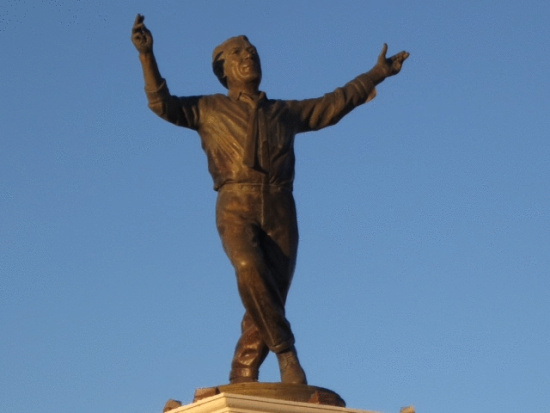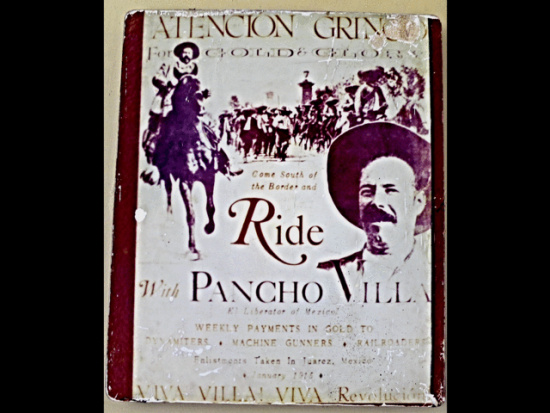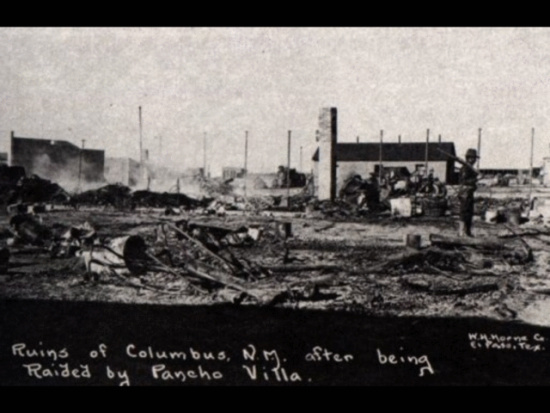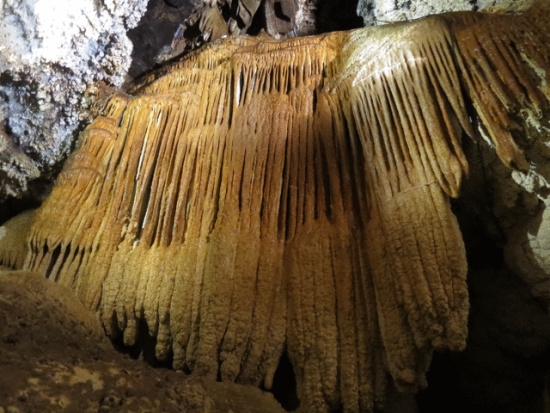Statue of Anthony Quinn dancing the sirtaki in Chihuahua. By Barry Evans.
Two weeks ago, Louisa and I were exploring the outskirts of Chihuahua, when I did a double-take. That huge bronze statue on top of the hill in El Palomar park—isn’t that a guy dancing the “sirtaki,” the dance forever associated with “Zorba the Greek” in the 1964 film of that name? If you saw the movie, I’ll bet you’re hearing the music that accompanied the dance (by Greek composer Mikis Theodorakis).
Sure enough, we were told that the statue is indeed of Anthony Quinn, who played Zorba, based on the sirtaki dance he (and Alan Bates, at the end of the film) did on the beach at Stavros in Crete. Turns out, Anthony Quinn, 1915-2001—one of the most successful and beloved actors of his generation, for any young ‘uns out there—was born in Chihuahua, to an Aztec mother and Mexican-Irish father.
Antonio Rodolfo Quinn Oaxaca, to give him his full name, was one of the most versatile actors ever, appearing in over 150 films. His roles included a Filipino freedom fighter, an Arab sheik, the Pope (!), a Chinese guerilla, the dimwitted strongman in Fellini’s “La Strada”, an Eskimo (hence Bob Dylan’s “Quinn the Eskimo”), the artist Paul Gauguin, and of course the peasant-musician Zorba. He won the 1952 Oscar for Best Supporting Actor in Elia Kazan’s “Viva Zapata!” playing Zapata’s brother Eufemio to Marlon Brando’s Emiliano Zapata.
While Quinn may be Chihuahua’s most famous son, the city is today mostly associated with Pancho Villa, bandit-turned-freedom fighter-turned revolutionary general-turned governor. (There is a link: Quinn’s father, Francisco “Frank” Quinn, fought alongside Villa.) (And for that matter, Zapata was an important ally of Villa’s during the 1910-1920 revolution.)
Poster inviting gringos to join the Mexican revolution, 1915.
Earlier that day, we toured Villa’s mansion in downtown Chihuahua, in which his widow continued to live until the 1980s. Best 20 pesos we’ve ever spent! The house is now a museum filled with memorabilia from the revolution, including photos of Francisco (Pancho) Villa in his various roles. The photo is of a 1915 poster which invites gringos to join the revolution “for gold and glory…weekly payments in gold for dynamiters, machine gunners, railroaders.” His appeal to gringos was short lived—for reasons which are still debated, Villa attacked the town of Columbus, New Mexico, in the pre-dawn hours of March 9, 1916 with 500 Villistas. It was a costly defeat for him; he lost nearly 80 men, compared to a total of less than 20 U.S. soldiers and civilians killed.
Aftermath of 1916 raid by Villistas on Columbus, New Mexico.
These days, most gringos fly into Chihuahua city to leave early the next morning on the Copper Canyon railroad (“Chepe”), Mexico’s last passenger rail service. If you’re considering such a trip, give yourself a day or two to explore the city and its curious connections with El Norte. Oh, and the nearby caves are well worth a visit, too!
Nombre de Dios cave near Chihuahua. By Barry Evans.
###
Barry Evans gave the best years of his life to civil engineering, and what thanks did he get? In his dotage, he travels, kayaks, meditates and writes for the Journal and the Humboldt Historian. He sucks at 8 Ball. Buy his Field Notes anthologies at any local bookstore. Please.




CLICK TO MANAGE